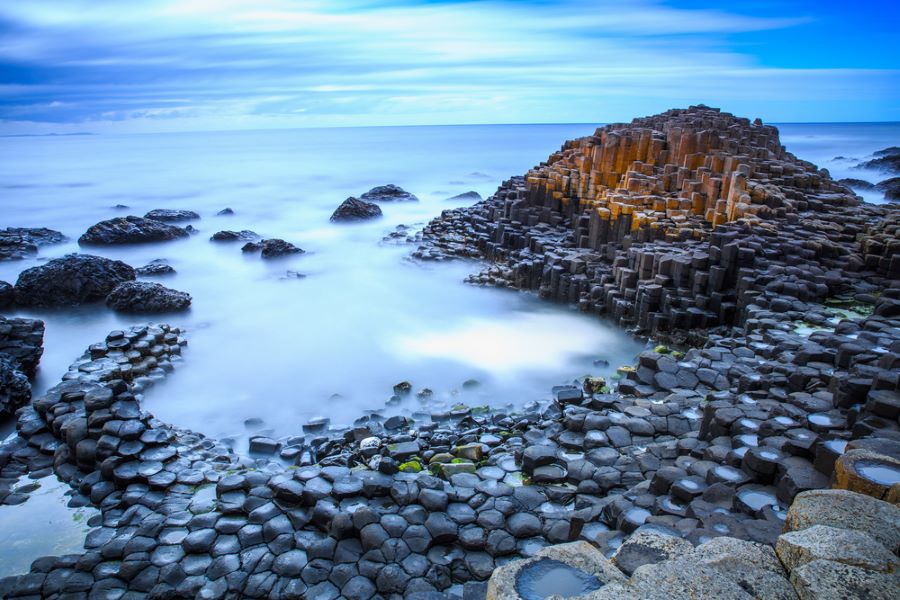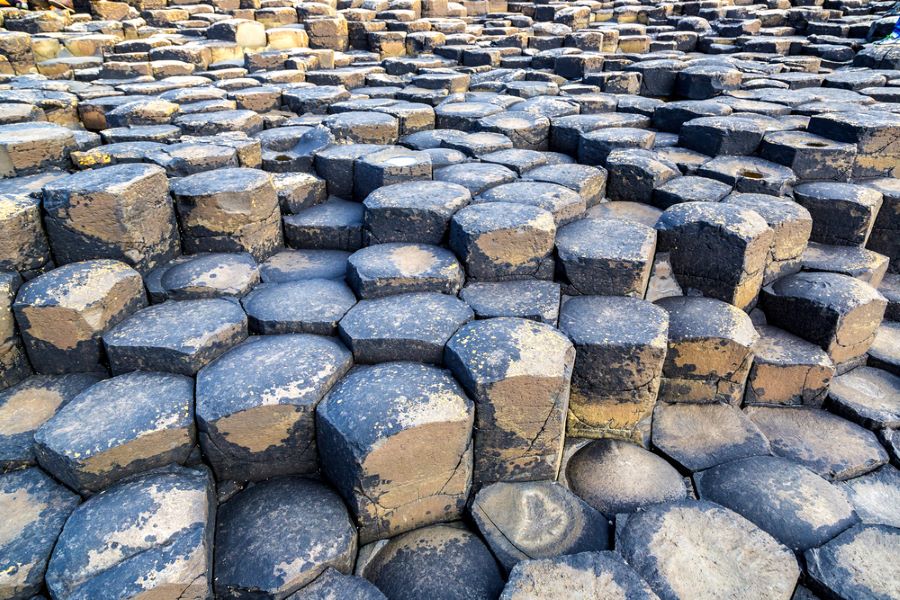Tucked away on the northern coast of County Antrim in Northern Ireland, about 90 minutes north of Belfast, lies the Giant’s Causeway, an enigmatic natural wonder that captivates the imaginations of travelers with its stark beauty and mythical origins. Spanning a stretch of coastline, this UNESCO World Heritage Site boasts about 40,000 interlocking basalt columns, a grand spectacle that is the result of an ancient volcanic fissure eruption.
The history of the Giant’s Causeway is as layered as the rock formations themselves. Formed over 60 million years ago, this dramatic landscape was created by a massive volcanic eruption that spewed molten basalt across the area. As the lava cooled rapidly, it contracted and cracked, forming the mostly hexagonal columns that make the site famous today. These formations, varying in height and creating a sort of stairway to the sea, have sparked the curiosity of geologists, mathematicians, and nature enthusiasts for centuries.

Giant’s Causeway, Northern Ireland
Beyond its geologic significance, the Giant’s Causeway is steeped in local myths and legends, most famously that of Finn McCool, a giant from Irish folklore. The legend claims that Finn built the causeway as stepping-stones to Scotland, so he could challenge a Scottish giant to a fight without getting his feet wet. This blend of natural history and folklore adds a mystical element to the visit, enriching the experience with stories of giants and ancient battles.
The surrounding area of the Giant’s Causeway offers breathtaking views and a rugged coastline, perfect for those looking to immerse themselves in nature. The site is part of the larger Causeway Coastal Route, known for its scenic drives and numerous walking paths that allow visitors to explore the varied landscapes at their own pace. Whether it’s the powerful waves crash against the rocks or the diverse bird species that inhabit the area, the Giant’s Causeway provides a sense of wonder and isolation that is increasingly rare in crowded tourist spots.

Basalt Columns, Giant’s Causeway, Northern Ireland
Visitors to the Giant’s Causeway can explore interactive exhibits at the Visitor Centre, which delve into the natural history and legends of the area. Visitors can also take guided tours that explore the geological and mythological aspects of the site.
You Might Also Enjoy: Offbeat Travel: The Dark Hedges of Northern Ireland
The columns themselves, mostly hexagonal, are a marvel of geometric precision. This naturally occurring pattern is explained through the concept of columnar jointing in basalt flows, in which the cooling and contracting process results in a regular pattern that minimizes stress across the forming columns, hence the prevalence of the hexagonal shape, which offers the most stability with the least amount of energy.
Exploring the Giant’s Causeway is truly a journey through time, from the ancient volcanic activity that shaped the land to the myths that have been passed down through generations.
Have you ever visited the Giant’s Causeway? Tell us about it in the comments below!


Leave a Reply